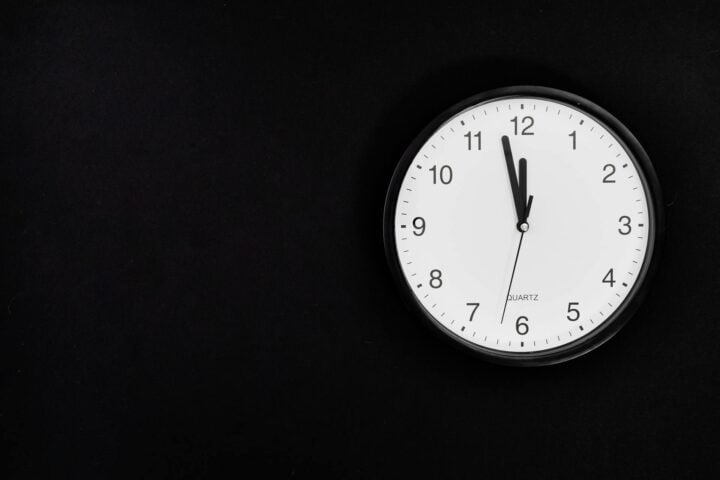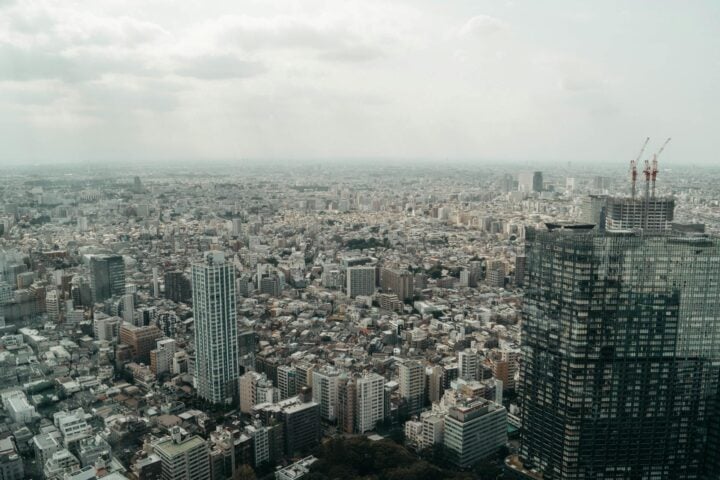Public Cleanliness Bureau (PCB) Headquarters, Basement Level 3. Here lie the “Microparticle Management Room” and the “Urban Gaps Room,” spaces where ordinary citizens are never allowed to enter.
As the “Cleanliness Performance Index (CPI) Presentation Battle” to determine this year’s budget allocation looms, the heads of both rooms quietly clash.
The target: dust beneath vending machines.
“Dust is the silence of the city,” declares Chief Chiritani of the Microparticle Management Room, advocating for the existence of “emotional microparticles” smaller than 0.3μm. Meanwhile, Chief Hazama of the Urban Gaps Room states, “Gaps are the poetry of the city,” emphasizing the “emotional residue” of dust.
Both chiefs have meticulously prepared their presentation materials, down to the animation settings in PowerPoint. However, suspicions of “image manipulation” arise regarding the slides submitted by Chief Hazama, causing tension within the bureau.
Once again, I find myself observing this bizarre battle with a special observation permit in hand.
The Two Faiths: Dust as Belief
10:12 AM: Visit to the Microparticle Management Room
At the eastern end of Basement Level 3, in a silence so profound it seems to absorb even the sound of the air conditioning, lies the Microparticle Management Room. Opening the door, the first thing that catches the eye is a collection of microscopic photographs of dust, categorized by particle size. A banner on the wall reads, “Floating particles are the silence of the city.”
Chief Chiritani notices my visit, nods quietly, and shows me part of his slide deck. “This is a distribution map of ’emotional microparticles’ smaller than 0.3μm. There is a correlation with the citizen anxiety index.”
The slides display a quantified model of “psychological cleanliness.” The legend of the graph includes emotional terms like “loneliness,” “absence,” and “dustiness,” which are not typically found in statistics.
“Dust does not speak. However, its silence speaks volumes.”
His voice is calm, but the animation settings in his slides are unusually intense. “Fade-in is set to 0.75 seconds, and slide-in is 1.2 seconds. This is the limit to recreate the floating sensation of particles.” I notice a memo posted behind him. “CPI is the GDP of cleanliness.” Whether it was a joke or a belief, I couldn’t tell.
2:47 PM: Visit to the Urban Gaps Room
At the western end of the same floor, in slightly humid air, lies the Urban Gaps Room. Opening the door, a silent slideshow is playing. Sunlight streaming under a vending machine, dust dancing in the wind, and the phrase “Gaps are the poetry of the city.”
Chief Hazama offers me a chair and says, “Gaps are the city’s breathing spaces. The dust that accumulates there is the trace of its breath.”
His presentation materials consist of vertical text slides and slow-motion videos. Eighty percent of the slides are blank, “to let the whitespace speak for the gaps.” “The font is Yu Mincho, size 26pt, with 1.8 line spacing. This brings out the ‘quietness.'”
He proposes the concept of “emotional residue of dust.” “Dust is the memory of the city. Cleaning is nothing less than an act of erasing memory.” I glance at the materials on his desk. They are titled “Poetic Value Evaluation Criteria for Dust (Draft).” The criteria include “the way particles dance,” “the angle of light,” and “the degree of public indifference,” all of which are impossible to quantify.
The arguments of both sides were spoken in entirely different languages. One sought to control dust through numbers, while the other sought to preserve it through poetry. Yet, they shared an abnormal obsession with PowerPoint animation settings and a tendency to find excessive meaning in the existence of “dust.”
I suddenly thought to myself. Cleanliness in this country might already be a religion.
The CPI Presentation Battle: A Duel of Silent Cleanliness
Once a year, the most tension-filled day at the Public Cleanliness Bureau (PCB) arrives. That is the “Cleanliness Performance Index (CPI) Presentation Battle.”
The venue is the “Cleanliness Strategy Multipurpose Hall” on Basement Level 2. The walls are made of sterile glass, the chairs are antibacterial, and the air conditioning is designed to replace the air every 10 minute.
At 9:00 AM, the judges quietly entered the room. The PCB Director, the PCB Audit Office Chief, and a cleaning influencer representing public sentiment, “@dustless_life.” Then, the Director took the stage and gave the opening address.
Opening Address by the PCB Director
“Thank you for gathering here today for this battle for the future of cleanliness. We believe that beneath the dust lies the dignity of our nation. Please, listen to the voices of the particles.”
A subtle silence and a faint cough echoed through the venue. As expected of the Director, a man who entrusts the nation to particles.
Microparticle Management Room: Presentation by Chief Chiritani
Chief Chiritani, dressed in a gray suit, ascended the stage in silence. The first slide read: “Dust does not speak.”
The presentation began with a psychological impact map of dust by particle size. All slides were in grayscale, and the only animation was “fade (0.75 seconds).” “This is a distribution map of ‘dustiness’ in urban areas. The red areas indicate regions where unconscious discomfort accumulates.”
He introduced an original index called the “Particle Silence Index” and concluded, “Dust, by existing, asserts absence.”
The PCB Audit Office Chief quietly took notes. “Particles with emotions…?”
Urban Gaps Room: Presentation by Chief Hazama
Chief Hazama, wearing a white shirt without a tie, took the stage. The first slide was a blank white background with a single phrase in Mincho font: “Gaps are the city’s breath.”
The presentation began with a video of dust under a vending machine illuminated by the setting sun. The background music was a solo piano. The slides were vertical text with wide line spacing. “This dust was collected last November from under a vending machine in Suginami Ward. It remained unnoticed, unswept, and continued to exist as a memory.”
He introduced a mysterious index called the “Emotional Residue Score” and concluded, “Cleaning is an act of erasing the city’s memory.”
The PCB Director quietly took notes. “Is this poetry?”
Comments from Cleaning Influencer “@dustless_life”
After the presentations, @dustless_life, sitting at the end of the judges’ table, muttered while fiddling with her smartphone. “Wow, dust is so deep… By the way, my ‘gap cleaning routine’ video recently went viral, and dust is actually kind of ‘aesthetic.’ I kinda want to clip this presentation for TikTok.”
Her comment was incomprehensible to both the Director and the Audit Office Chief, but it momentarily pulled the atmosphere of the venue into another dimension.
When the presentations ended, silence filled the room. Both presentations were filled with an abnormal passion for dust and an obsession with PowerPoint. However, what caught my attention was the unnaturally beautiful dust image that briefly appeared in Chief Hazama’s slides.
It looked like a stock photo, something I had seen somewhere before. A doubt began to grow within me. Was this dust really “there”?
The Emergence of Manipulation Suspicions: Was the Dust Real?
After the presentations, I flipped through the materials distributed in the waiting room. Among them was the file name of the “dust under the vending machine” image used in Chief Hazama’s slides.
“dust_emotion_final2b.jpg”
It looked familiar. When I got home, I used my image search tool to investigate. The result was astonishing.
The image was listed on an overseas stock photo site. The tags included “dust particles,” “sunlight,” and “aesthetic,” and the location was described as “an abandoned factory in Budapest.”
Further investigation revealed that the photo was posted by a man with no particular attachment to dust, a fan of abandoned factories. The caption read, “The dust that accidentally got in the shot was annoying, but oh well.” In other words, the dust that Chief Hazama claimed ” was collected under a vending machine in Suginami Ward” was not “there.”
The next morning, I reported this fact to the PCB Audit Office. A few hours later, the Audit Office Chief issued the following statement: “There is a possibility that the materials submitted by the Urban Gaps Room contained an image of unknown origin. We are currently verifying the facts.”
This announcement quietly set the PCB’s Slack threads ablaze.
“What is dust_emotion_final2b.jpg?” “Who approved this?” “Where was the image source written?”
Sensing the scent of scandal, reporters began to swarm around Chief Hazama. To their questions, he replied: “That image is merely an ‘illustration.’ It was used as a visual aid to convey the essence of dust. The location description was an artistic expression.” However, his words only blurred the line between “artistic expression” and “falsehood.”
That afternoon, Chief Chiritani quietly polished his rimless glasses and held a press conference. “I believe in dust. Dust does not lie. But those who use dust to lie must be honest.” He re-presented part of his slides and continued, “Dust does not lie. But there are people who lie using dust.”
His words sent a quiet shock through the PCB. After the press conference, the lenses of his rimless glasses reflected a particle-like glimmer of light. Manipulation or artistic expression? The boundary was as ambiguous as dust. But one thing was certain. In this country, even a speck of dust carries politics.
Internal Investigation and Chaos: The Labyrinth of Dust Origins
The PCB Audit Office’s investigation began under the guise of “fact-checking interviews.” However, the scope of the interviews inexplicably expanded to include “all assistants involved in the Urban Gaps Room’s material preparation,” and Slack logs, image file version histories, and flash memory usage logs were scrutinized.
During this process, one staff member reportedly testified: “That image was chosen because the Chief said, ‘This one has the right vibe.'” Another staff member allegedly stated, “Regarding the image source, the Chief said, ‘Let’s keep it vague, like a gap.'”
Thus, the responsibility dissolved into “vibes” and “gaps.”
Interim Report from the PCB Audit Office
A few days later, the Audit Office released an interim report: “While no clear records of the image source were found, there is currently no evidence of intentional falsehood. Moving forward, we will consider guidelines for ‘source citation in material preparation.'”
In other words, no one was punished, nothing was clarified, and only the guidelines increased. A conclusion very much in line with the PCB.
I decided to investigate the poster of that image further by examining the stock photo site’s user profile. The username was “rust_industrialist.” From the metadata and tags of the posted images, I discovered he was a fan of abandoned factories living in Budapest. Further searches led me to his social media account. His profile read, “Loves ruins, pipes, and cats.”
I quietly attempted to contact him via DM.
A few hours later, I received a reply: “Oh, that dust? I thought it was just dirt on the lens… I never imagined it would be used by a Japanese government agency. That’s kinda amazing.”
His words carried neither surprise nor pride. Instead, his indifference to dust gave them an air of authenticity.
Manipulation or artistic expression? The boundary was as ambiguous as dust.
Dust Belonged to No One
A week after the CPI Presentation Battle, the results were announced.
The outcome: both rooms’ budgets remained unchanged. The judging committee’s comment was as follows: “Since dust under vending machines is subject to wind and moves, it is difficult to clearly determine which department’s jurisdiction it falls under. Therefore, the contributions of both rooms are deemed equal.”
In other words, because dust moves, it belongs to no one.
Reaction from Chief Chiritani
Surrounded by reporters, Chief Chiritani quietly removed his rimless glasses and said: “Dust indeed moves. However, using that as an excuse to obscure responsibility is deeply disrespectful to dust.” His voice carried no anger, only a faint sadness, like particles drifting in the air.
Reaction from Chief Hazama
Meanwhile, Chief Hazama responded to reporters’ questions: “Gaps are places beyond responsibility. That is why I wanted to place poetry there.” His words were no longer explanations but poetry itself.
Post by Cleaning Influencer
@dustless_life posted the following on the night of the results announcement: “Dust belongs to no one… But wouldn’t a ‘Who Owns the Dust? Championship’ go viral? Dust Sovereignty #ParticleInfluencer” The post received 30,021 likes.
Thus, the battle over dust ended without victory or defeat, simply drifting away like the wind. In the end, I recalled the words of the man who posted that image, the one who loves ruins, pipes, and cats.
“Dust just happened to be there.”
Yes, perhaps cleanliness in this country also just happens to be there.
To Those Who Drift in the Wind
Looking back, on that winter day, White Line Division Chief Shiraishi defied the system called cleanliness and took a stand at the cost of his position.
But this time, no one stood up. No one took responsibility, no one won, no one lost. Only the dust remained.
No. To be precise, it was “made to have remained there.”
That was the poetry of the Urban Gaps Room, the silence of the Microparticle Management Room, and perhaps the cleanest way of the Public Cleanliness Bureau as an organization.
Finally, I suddenly remembered the file name of that image “dust_emotion_final2b.jpg”. The word “final” in it somehow sounded so hollow.
Dust belonged to no one. And surely, cleanliness in this country also belongs to no one. When I glanced out the window, a pigeon was perched on the window frame of a building. On its leg was a small tag that read:
“Who is cleanliness for?”




